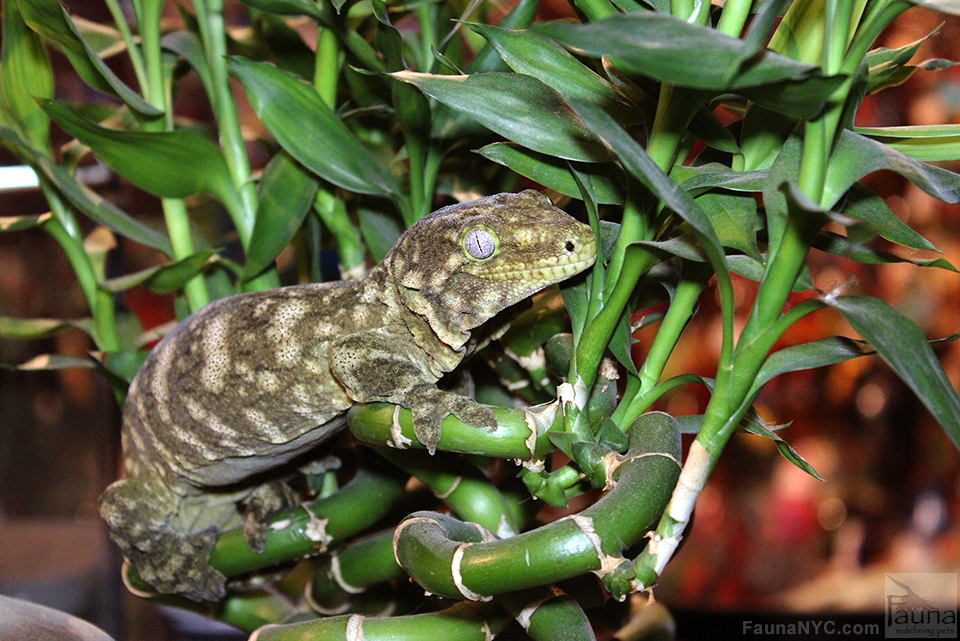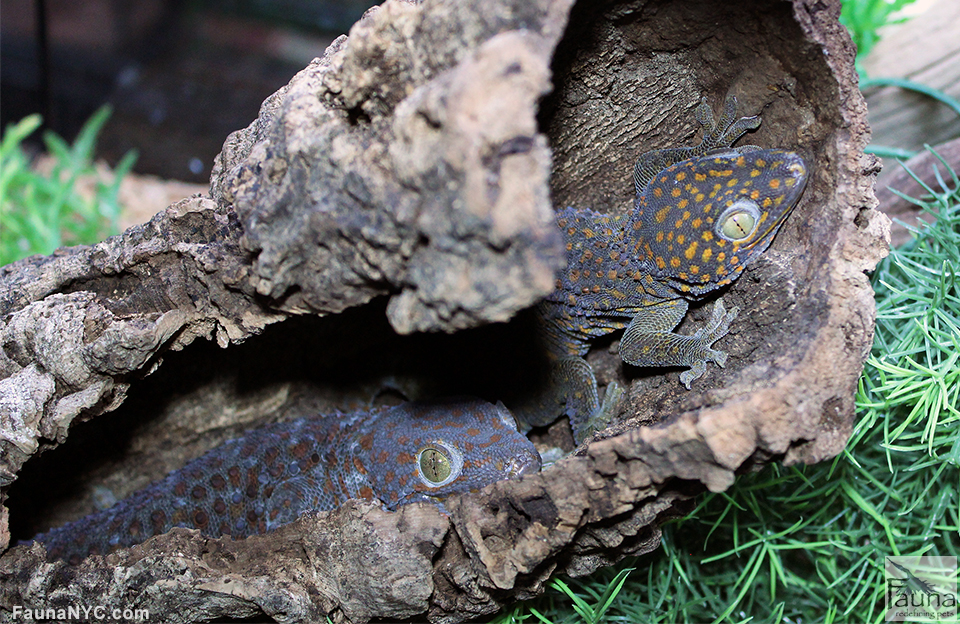

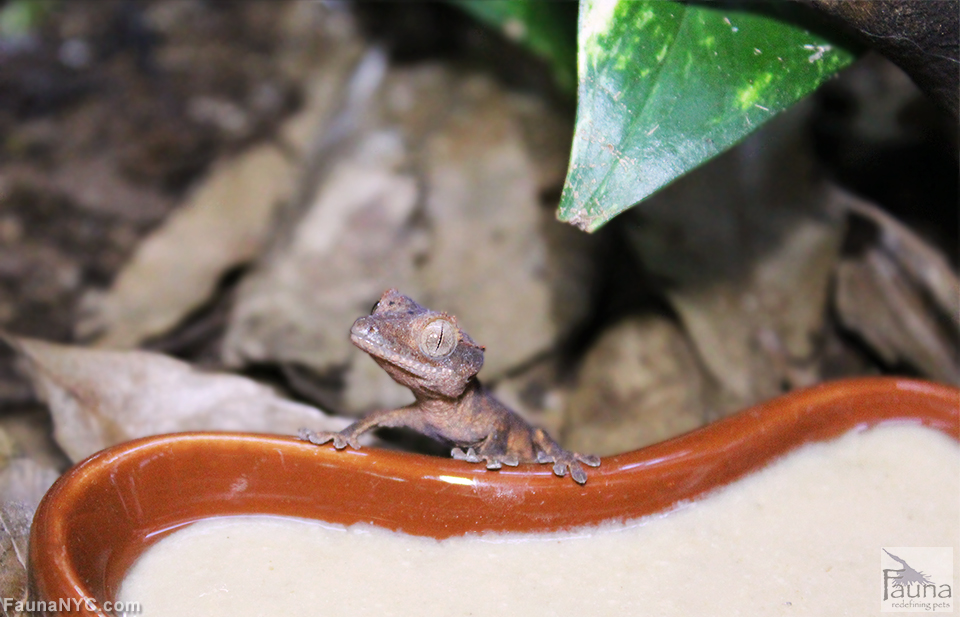
Crested Gecko (Correlophus ciliatus)
Crested Gecko (Correlophus ciliatus) Fauna ReptilesReptiles Home Featured in Reptiles Snakes Lizards Amphibians Tortoises Reptile Boarding Crested Gecko (Correlophus ciliatus) This juvenile crested gecko (Correlophus ciliatus) was hatched here in the store. If he’s anything like the parents, he’ll be absolutely beautiful when he grows up. All about the Crested Geckos The crested gecko, native to New Caledonia, is a fascinating pet for the devoted herpetologist. Thought to be extinct until just a few decades ago, these geckos require a humid, vertical enclosure and a calcium rich diet of insects or crested gecko paste. They only grow to be about seven to nine inches in length, and come in several different color morphs. The crested gecko has flat feet coated in hundreds of microscopic hairs which allow it to climb vertical surfaces. Though they are closely related to the gargoyle gecko, they are unable to regrow tails like other species. Crested geckos also lack eyelids, and lick their eyeballs instead. They are also sometimes called the “eyelash” gecko because of the tiny triangles above their eyes that give them an eyelash-like appearance. What kind of home do they need? Native to the trees of New Caledonia, northeast of Australia, the crested gecko needs a large, humid enclosure that is taller than it is wide. Crested geckos are arboreal, meaning they spend most of their life in trees. A vertical tank will allow the crested gecko to climb as he would in the wild. A 20 gallon tall is best at minimum, but you can always opt for larger to allow more movement. The tank should have a good...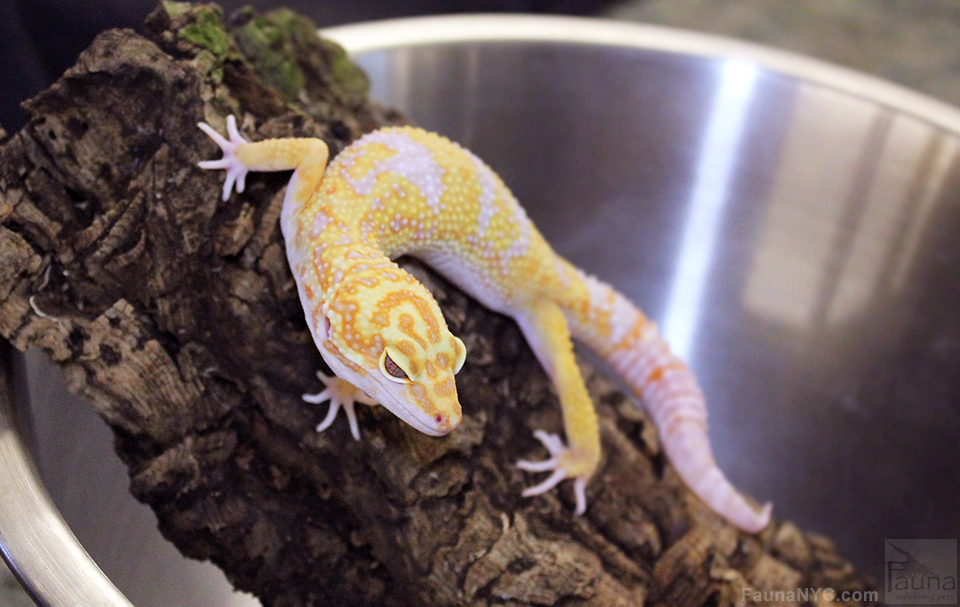
Leopard Gecko (Eublepharis macularius)
Leopard Geckos (Eublepharis macularius) Fauna ReptilesReptiles Home Featured in Reptiles Snakes Lizards Amphibians Tortoises Reptile Boarding All about the leopard gecko Leopard geckos are one of the most popular pet lizards due to their manageable size and friendly temperament. Nearly all leopard geckos available in the US have been captive raised for multiple generations, making them not only an an excellent choice for the beginner, but also an environmentally responsible decision. Since they are widely captive raised and have no set breeding season, leopard geckos are readily available year round. Leopard geckos are one of the largest gecko species, reaching around 8 or 9 inches in length. The wild type, aka “normal” leopard gecko, is yellow with brown-black spotting as an adult. Juveniles tend to have striped patterns that fade with age. Unlike other geckos, leopard geckos do have eyelids. They are also completely terrestrial, lacking lamellae on the toe pads that allow other gecko species to walk up vertical surfaces. The average lifespan of a leopard gecko is around 12-15 years, although some have reportedly lived more than 25! Given their longevity, much thought is in order prior to deciding to purchase a leopard gecko. What kind of home do they need? The most common type of housing for leopard geckos is an aquarium. The minimum size should be a 20 gallon long tank, which can house one to two geckos. Ensure that you only have one male per enclosure, as males are very territorial and will fight each other. Although leopard geckos are nocturnal and many believe there is no benefit from UVB lighting, we always...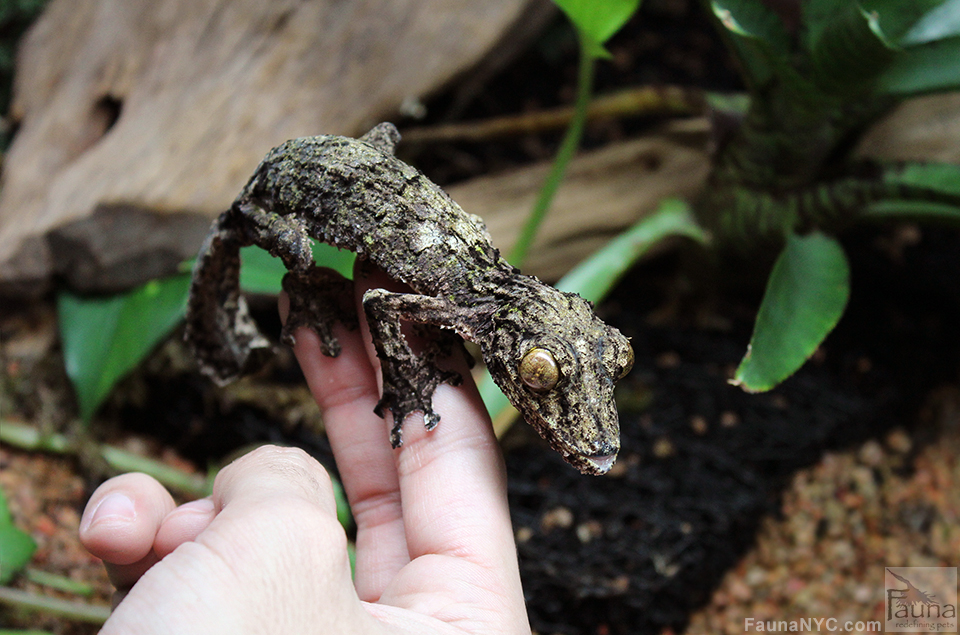
Uroplatus sameiti
Uroplatus sameiti Fauna ReptilesReptiles Home Featured in Reptiles Snakes Lizards Amphibians Tortoises Reptile Boarding Uroplatus sameiti This Uroplatus sameiti, is very similar looking species to our U. sikorae or Mossy Leaf-tailed Geckos. They are well developed to blend into their habitat by looking as though they have bark, moss and lichens covering their bodies. The easiest way to distill the two sub-species is to look inside their mouths. U. sikorae has black interior mucous membrane, while in the U. sameiti it will be pink or flesh...